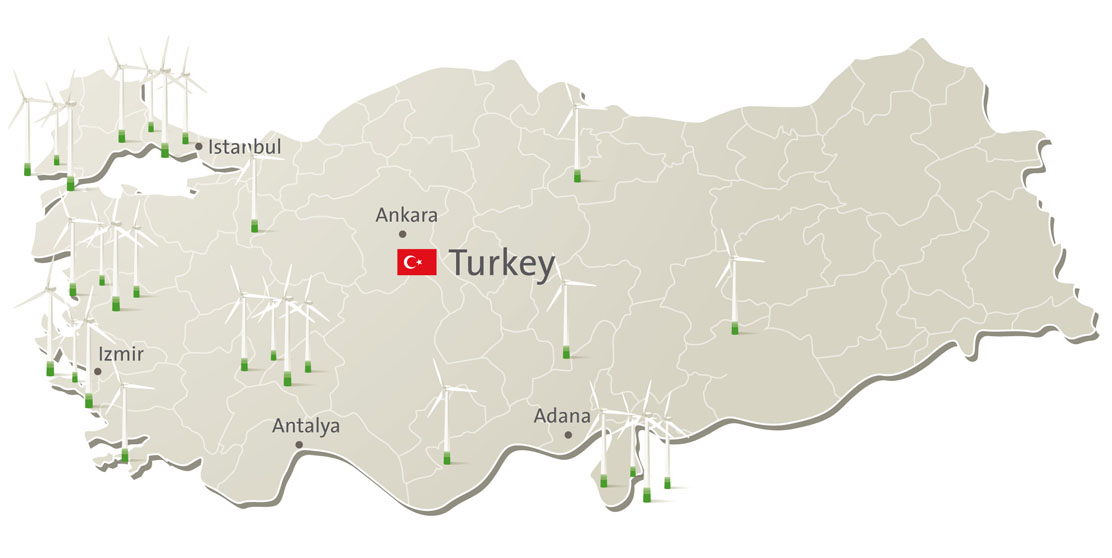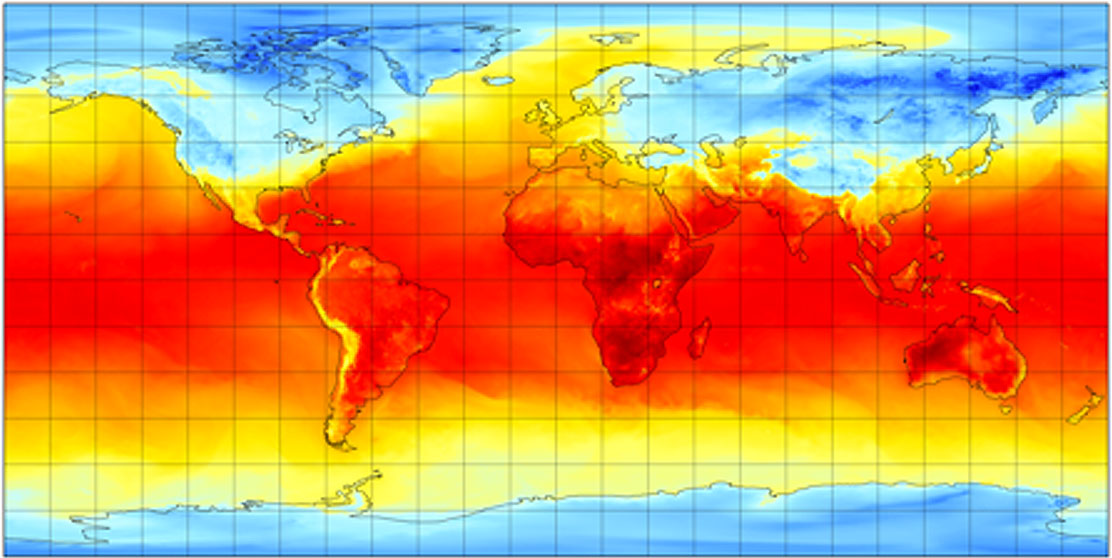Wind power – the driving force behind the energy transition
Wind turbines are operated in two ways: Onshore, that means on land, and offshore, i.e. at sea. These two techniques complement rather than compete with each other and both offer advantages and disadvantages.
Onshore wind energy can be referred to as the driving force of the energy transition. Over the last 20 years it has evolved from a niche area into leading renewable energy technology. Not only is the number of wind farms increasing, but specifically, the performance of individual systems is growing significantly from year to year. Whereas in the 1990s, plants with a capacity of 600 KW were standard, nowadays the latest plants can easily output 7.5 MW.

Onshore wind energy
Most wind farms are currently located in northern and central Germany, but current technological and political developments mean onshore wind energy is becoming increasingly attractive in southern regions. The advantages of onshore wind farms, plus already mature technologies achieved through years of experience, is improved network connectivity and lower investment costs. With this type of wind energy production, there are often 5 to 15 plants per wind farm – in contrast to offshore wind power, where 30 and 40 plants are the norm. However, finding suitable locations is a problem, particularly in Germany: As space is in short supply, where should onshore wind farms be built? Wind does not blow constantly, which means energy cannot be produced continuously onshore.
While onshore wind energy has been in commercial use in Germany for 20 years, the offshore installations are still at an early phase of development. The first German North Sea wind farm went into operation in 2010. Offshore installations can be found worldwide, especially in Chile, the United States, Spain and England. Germany has an installed wind capacity of around 48 GW; approximately 45 GW produced by onshore, and 4 GW by offshore wind farms.

Constant basic supply from offshore wind farms
In the case of the latter, the question of suitable sites does not arise as the sea offers enough space for large installations. There is also always wind at sea, which ensures a permanent basic supply. But connecting these facilities to the power grid is more difficult, as is their maintenance: Only specially trained personnel can travel to offshore wind farms on special vessels and in favourable weather conditions. This means repairs are complicated and expensive. The so-called wake effect is also a factor: Depending on the wind direction, plants swirl within a radius of up to ten kilometres, which may lead to performance degradation.
Advantages of wind power
Wind power is generally becoming more popular in Germany. according to polls, the vast majority of the population see wind energy as a positive development and two-thirds state that they are in favour of the expansion of renewable energies, and specifically wind energy. In addition to reducing dependence on fossil fuels such as coal, oil and gas, other important reasons are the positive effect on the environment and climate protection. Job creation and long-term reductions in energy prices are also seen as the advantages of wind energy. Unlike conventional sources of energy, it is regarded as being more sustainable and economical.


 Back to overview
Back to overview 

